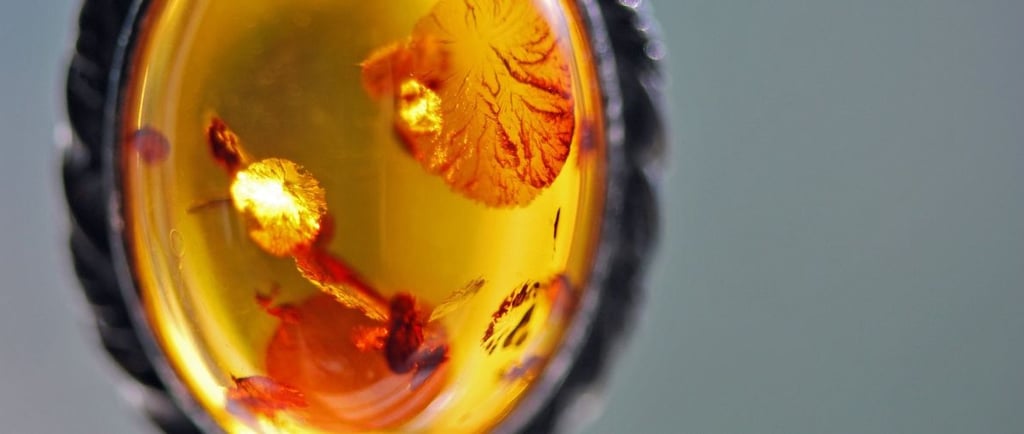
How to Spot Genuine Baltic Amber?
Tips for Avoiding Imitations
IDENTIFICATION AND QUALITY
6/12/20242 min read



How to Spot Genuine Baltic Amber: Tips for Avoiding Imitations
Baltic amber, with its captivating hues and ancient origins, has fascinated collectors and jewelry enthusiasts for centuries. However, its popularity has led to the proliferation of imitations. Whether you're a seasoned collector or a curious novice, knowing how to distinguish genuine Baltic amber from fakes is crucial. Here's a comprehensive guide to help you make informed purchases and avoid imitations.
Understanding Baltic Amber
Baltic amber is fossilized tree resin that dates back 44 million years, primarily found in the Baltic Sea region. Its unique properties and rich history make it a prized material for jewelry, ornaments, and therapeutic use.
Why is Baltic Amber Valuable?
1. Historical Significance: Baltic amber has been used for thousands of years in various cultures for jewelry, medicine, and religious artifacts.
2. Aesthetic Appeal: Its range of colors, from pale yellows to deep browns, along with its ability to encapsulate ancient flora and fauna, adds to its allure.
3. Therapeutic Properties: Many believe in the healing properties of amber, particularly its ability to release succinic acid, which has anti-inflammatory effects.
Common Imitations and Their Characteristics
Imitations can be made from various materials such as plastic, glass, or modern tree resins. Knowing these common substitutes helps in identifying genuine amber.
Types of Imitations
1. Plastic: Often made to mimic the color and appearance of amber but lacks the natural inclusions.
2. Glass: Heavier and colder than genuine amber, glass imitations can sometimes be identified through their perfect clarity.
3. Modern Tree Resins: While closer in composition, these are much younger and lack the historical context of Baltic amber.
Tips for Spotting Genuine Baltic Amber
1. Visual Inspection
Genuine amber typically contains imperfections like small air bubbles, inclusions of ancient plant or insect material, and a varied color palette. If the piece is too perfect, it might be an imitation.
2. Touch and Feel
Amber is warm to the touch and feels slightly tacky. Plastics and glass, in contrast, are cold. Rubbing amber can produce a faint pine scent due to its resin origins.
3. Float Test
Amber is less dense than water and will float in saltwater. To conduct this test, mix 7-8 teaspoons of salt into a glass of water and place the amber piece in the solution. Genuine amber will float, while most imitations will sink.
4. UV Light Test
Under UV light, genuine amber fluoresces in a blue or greenish color. This is a quick and non-destructive test that can be done with a simple UV flashlight.
5. Scratch Test
While not always recommended due to the potential for damage, scratching amber with a pin can reveal its true nature. Genuine amber is relatively soft (2-3 on the Mohs scale), whereas glass is much harder and won't scratch easily.
6. Hot Needle Test
Heat a needle and press it against the amber. Genuine amber will emit a pine-like smell, whereas plastic will smell of burnt chemicals. This test should be used with caution to avoid damaging the piece.
7. Electrostatic Test
Rubbing amber with a cloth can create static electricity. Genuine amber will attract small paper pieces when rubbed vigorously due to its electrostatic properties.
Conclusion
Spotting genuine Baltic amber involves a combination of tests and observations. While some methods can be performed at home, consulting with a reputable jeweler or gemologist for an expert opinion is often wise. Understanding these tips can help you appreciate the beauty and history of Baltic amber while ensuring your collection remains authentic.
Investing in genuine Baltic amber not only adds a piece of natural history to your collection but also preserves a part of our planet's ancient past. Happy hunting!

Information
balticambermala.com All rights reserved.
Follow us at:
